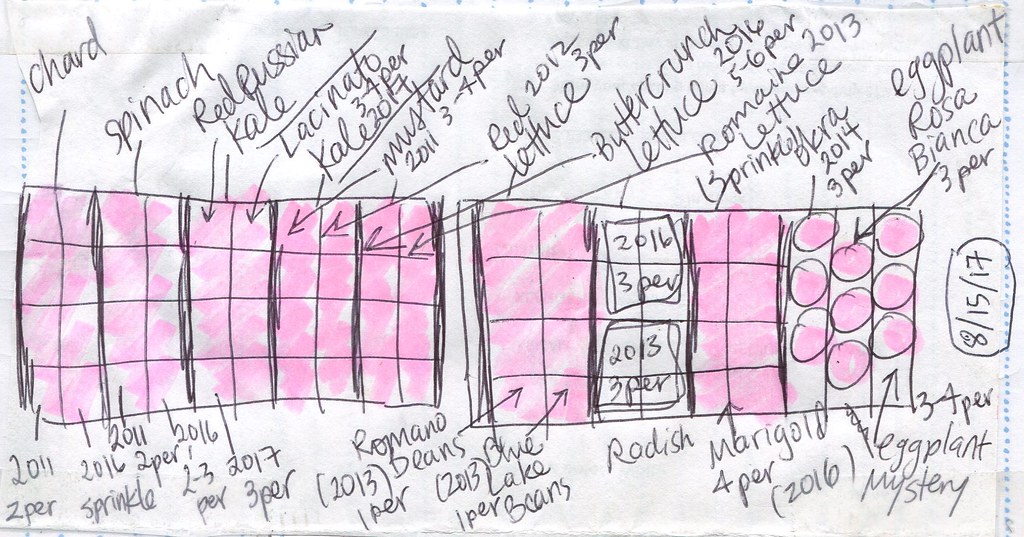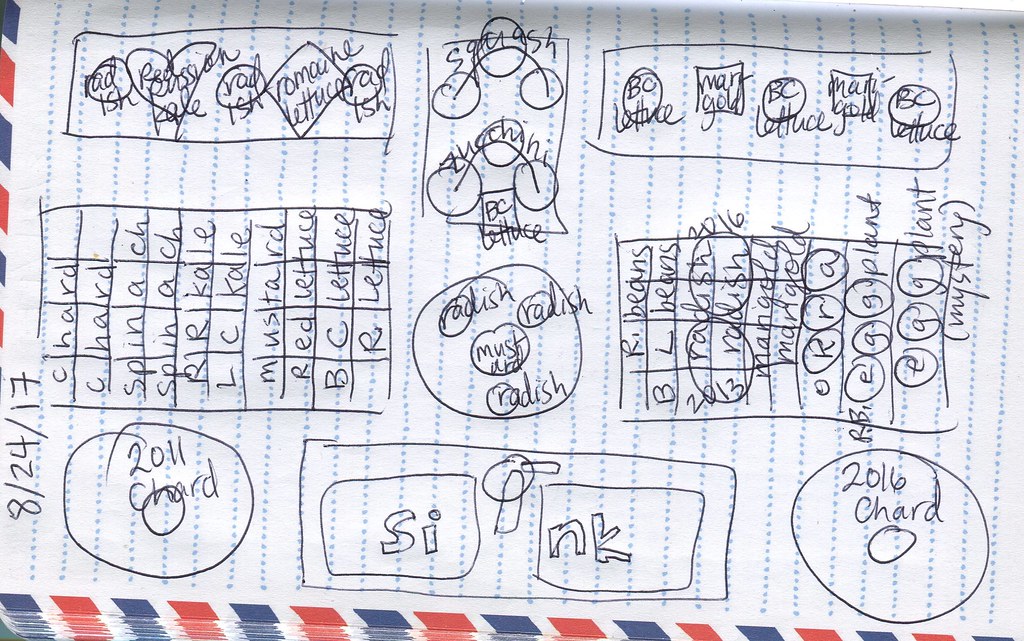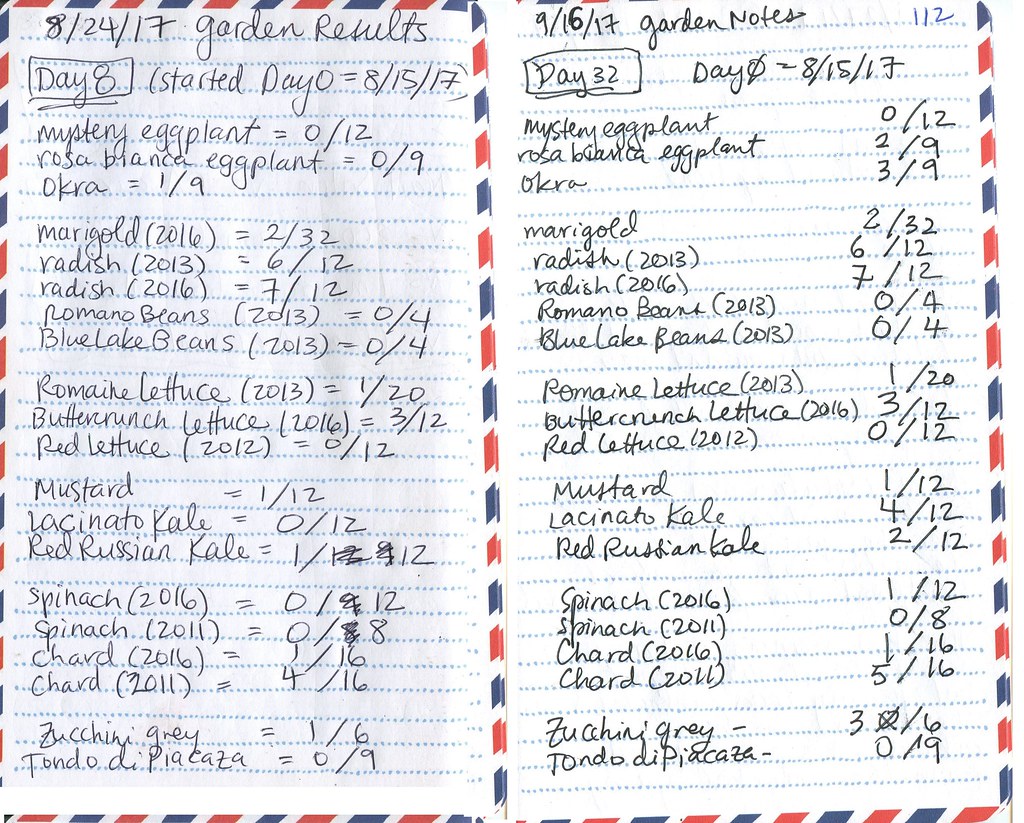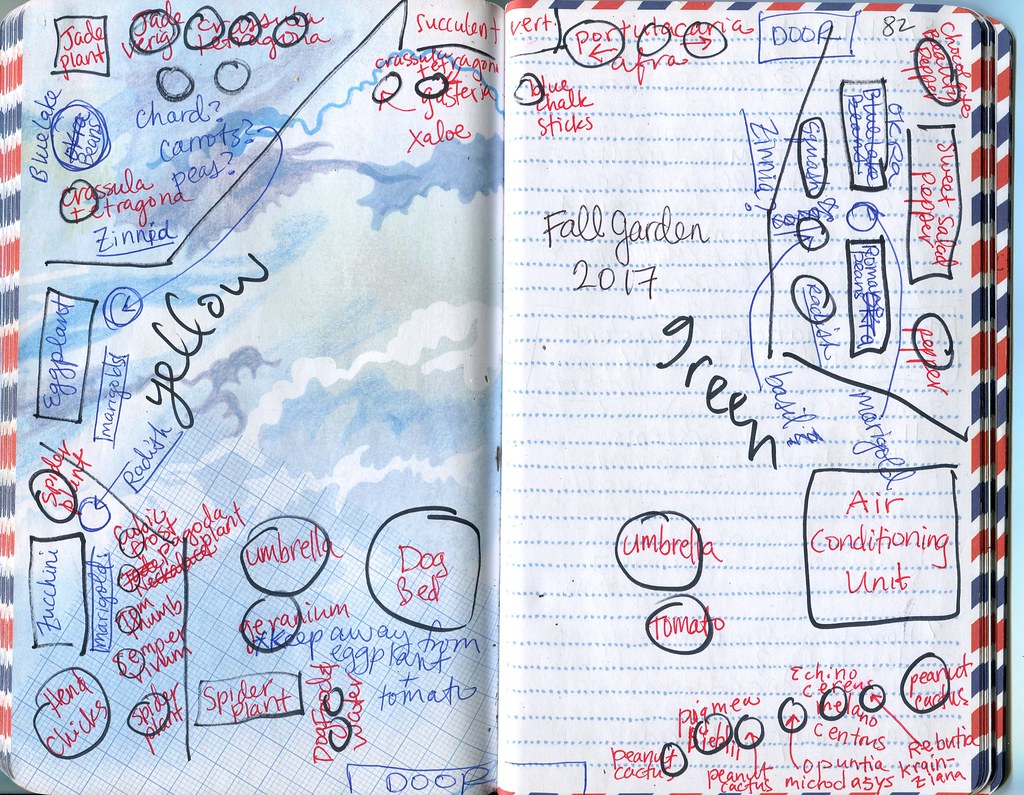As a teacher, I'm always optimistic at the start of the semester! It seems appropriate to start a batch of seeds and watch tangible growth as the academic year progresses. The image below shows the layout of my seed starting trays, filled with seed-starting soil. I don't know if it is actually critical to have this type of setup, but I usually have good results with it.
I can say that I borrowed seed stocks from the Seed Library of Los Angeles (grey zucchini squash, Tondo di Piacenza squash, and Rosa Bianca eggplant). I arranged the trays in a window box (extremely sunny) inside our house (not too hot) and right near the sink (to not forget to water them).
I kept a tally of which seeds germinated, and roughly how long the seedlings took to emerge. In October, I transferred them outdoors in hopes that we would have cooler wetter weather on the way. However, cooler weather was not in the forecast (hindsight is 20/20).
It looks like the Tondo di Piacenza squash maybe needs warmer weather or longer days to encourage germination? Possibly same with lettuces? Or maybe the bean seeds need to be scarified. Or maybe I planted them too deep, lettuce seeds need light to signal germination. Or maybe the Red Lettuce is too old or didn't fill its seeds well when it was setting on seeds.
#SoCal #SFV Weather watch @wunderground Wind advisory with gusts to 40 mph 🌬 and excessive heat warning Temperatures... 100-106 degrees 🔥🌞🌡 pic.twitter.com/E2Ifr68HkX— Kayla A. Kaiser (@hamerk02) October 21, 2017
I killed that praying mantis by putting her outside on the blacktop, then did a bit of reading and found out that she would not have been harmful to the garden. Still feeling a bit guilty about doing that. I did have an aphid infestation, but left it for months untreated since it's only advised to apply dormant oil when the temperature is above 40 deg F but below 90 deg F. Thus I have only applied it this past weekend (Jan 7, 2018).
You can see actual photos of the seedlings here: Winter Garden Album on Facebook
The Bad News: The geranium finally died, so it has been removed. The peppers also have been retired. I never found any zinnia. There's no basil. I have never had luck germinating beans, so there are none of those. The squash didn't survive, not sure why. I didn't plant any carrots or peas. The mustard didn't survive. The tomato is long gone by now. The lettuces didn't survive.
The Good News: Starting in the upper left corner of the map above, one okra plant is alive. A strong crop of chard is nearby. Everything on the upper right corner of the map above has been retired or relocated. The lower left corner holds 2 Rosa Bianca eggplant, 2 French (dwarf) marigolds, 1 large radish and 7 smaller ones. We have 2 Lacinato kale plants and 1 Red Russian kale that survived.
I'm so happy we're past the winter solstice. I can feel each day being longer than the preceeding one and before we know it, we'll be back in summer! I am planning to plant some seeds soon, to get another round of lettuce, spinach, herbs, squash, tomatoes and peppers. I have posted some gardening guides on our Kaiser Wellness Center website, which I refer back to often when deciding what to plant and when. Since I don't have a public garden anymore, I really have given up tagging each plant with a QR code. Maybe I'll repurpose the QR codes for some other application.





No comments:
Post a Comment